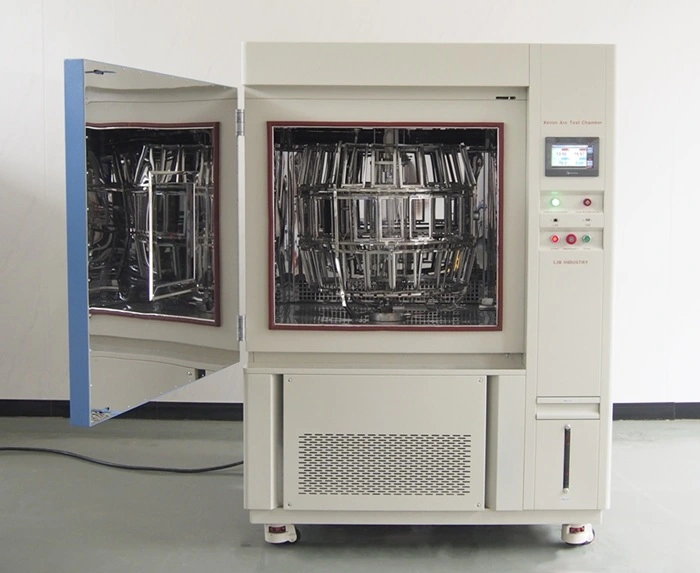Turning Extreme Conditions into Insights: The Science of Accelerated Aging
Turning Extreme Conditions into Insights: The Science of Accelerated Aging
Accelerated aging represents a pivotal methodology in modern product development, compressing years of environmental exposure into weeks or months through controlled stress conditions. This scientific approach enables manufacturers to predict product longevity, identify potential failure mechanisms, and optimize formulations before market release. By subjecting materials to intensified temperature, humidity, and other environmental stressors, researchers gather critical data that would otherwise require extensive real-time observation. The precision and reliability of accelerated shelf life testing equipment have transformed quality assurance across industries, from pharmaceuticals to electronics, making it an indispensable tool for innovation and regulatory compliance.

How Extreme Environmental Conditions Simulate Long-Term Degradation?
Understanding the relationship between stress conditions and material deterioration forms the foundation of accelerated aging science. Environmental stressors act as catalysts, expediting chemical reactions and physical changes that naturally occur over extended periods.
Temperature Acceleration Principles
Elevated temperatures increase molecular kinetic energy, accelerating oxidation, hydrolysis, and polymer chain degradation. The Arrhenius equation serves as the mathematical backbone, establishing that reaction rates approximately double with every 10°C temperature increase. Testing chambers capable of reaching -86°C to +150°C enable comprehensive thermal stress profiling across diverse material categories.
Humidity-Induced Degradation Mechanisms
Moisture penetration triggers multiple degradation pathways including hydrolytic cleavage, corrosion, and microbial proliferation. Controlled humidity environments ranging from 20% to 98% RH replicate conditions from arid deserts to tropical rainforests. The synergistic effect of temperature and humidity creates particularly aggressive aging scenarios that mirror real-world climate exposures.
Cyclic Stress Versus Constant Exposure
Alternating between extreme conditions often produces more realistic degradation patterns than steady-state testing. Thermal cycling induces mechanical stress through expansion and contraction, while humidity fluctuations simulate day-night or seasonal variations. Programmable controllers enable sophisticated cycling protocols that better represent actual usage environments.
Monitoring Chemical, Physical, and Mechanical Property Changes
Comprehensive aging studies demand multi-dimensional analytical approaches to capture the full spectrum of material transformations throughout accelerated testing protocols.
Chemical Stability Assessment Methods
Spectroscopic techniques, including FTIR and UV-Vis spectroscopy, track molecular structural changes, identifying oxidation products, chromophore formation, and functional group modifications. Using accelerated shelf life testing equipment, chromatographic analysis quantifies volatile degradation products and monitors active ingredient potency in pharmaceutical applications. These chemical fingerprints reveal degradation kinetics invisible to visual inspection.
Physical Property Transformation Tracking
Color stability, transparency, dimensional changes, and surface morphology provide tangible evidence of aging effects. Instrumental color measurement systems detect subtle chromatic shifts while texture analyzers quantify hardening or softening tendencies. Surface characterization through microscopy reveals crack formation, delamination, or crystallization phenomena that compromise product integrity.
Mechanical Performance Degradation
Tensile strength, elongation at break, and impact resistance measurements quantify structural integrity loss over simulated aging periods. Dynamic mechanical analysis (DMA) characterizes viscoelastic property changes across temperature ranges. Packaging materials particularly require robust mechanical testing to ensure continued protection throughout shelf life expectations.
Property Category | Measurement Techniques | Degradation Indicators |
Chemical | FTIR, GC-MS, HPLC | Molecular structure changes, compound formation |
Physical | Colorimetry, microscopy, DSC | Discoloration, crystallization, phase transitions |
Mechanical | Tensile testing, DMA, impact analysis | Strength loss, brittleness, deformation |
Data Correlation Between Accelerated and Real-Time Aging Studies
Establishing reliable predictive models requires validating accelerated test outcomes against actual shelf life performance through statistical correlation and mathematical modeling.
Arrhenius Modeling Applications
The Arrhenius relationship provides the theoretical framework for temperature-based acceleration factors. By testing at multiple elevated temperatures and measuring degradation rates, researchers calculate activation energy values that enable extrapolation to storage conditions. This mathematical approach transforms weeks of accelerated data into years of shelf life predictions with quantifiable confidence intervals.
Q10 Value Determination
The Q10 coefficient quantifies how degradation rates change with 10°C temperature variations, offering a practical tool for shelf life estimation. Using accelerated shelf life testing equipment, industries typically observe Q10 values between 2-4, though this varies by product category and degradation mechanism. Determining product-specific Q10 values through multi-temperature studies enhances prediction accuracy significantly.
Real-Time Validation Protocols
Parallel real-time stability studies running under recommended storage conditions provide essential validation data. Comparing accelerated predictions against actual performance at strategic intervals builds confidence in extrapolation models. Discrepancies between predicted and observed outcomes prompt refinement of acceleration factors or identification of overlooked degradation pathways.
Temperature (°C) | Acceleration Factor | Real-Time Equivalent |
25 (Control) | 1× | Baseline storage condition |
40 | 4-8× | 6 months = 2-4 years |
50 | 12-20× | 3 months = 3-5 years |
Advanced Chamber Control Systems for Precision Testing
Modern accelerated shelf life testing equipment incorporates sophisticated control technology that ensures reproducible conditions and enables complex testing protocols aligned with regulatory requirements.
Programmable Multi-Segment Profiling
Contemporary controllers feature color LCD touchscreens with Ethernet connectivity, enabling precise programming of multi-stage temperature-humidity profiles. Users can create custom sequences alternating between stress conditions, hold periods, and recovery phases. This flexibility accommodates diverse testing standards across pharmaceutical, food safety, and materials science applications.
Uniform Environmental Distribution
Advanced air circulation systems utilizing strategically positioned outlets ensure homogeneous conditions throughout the testing volume. Temperature deviation maintained within ±2.0°C and humidity deviation within ±2.5% RH across the entire chamber prevents location-dependent variability. This uniformity proves critical when testing multiple samples simultaneously or validating large-format products.
Automated Data Logging and Compliance
Integrated data acquisition systems in accelerated shelf life testing equipment continuously record environmental parameters, generating audit trails essential for regulatory submissions. Automatic water supply systems with purification maintain consistent humidity generation without manual intervention. Remote monitoring capabilities through Ethernet connections enable real-time oversight and immediate alert notification for excursion events.
Specification | TH-500 Model | Testing Advantage |
Volume | 500L | Accommodates multiple product configurations |
Temperature Range | -86°C to +150°C | Covers extreme environmental scenarios |
Humidity Range | 20% to 98% RH | Replicates diverse climate conditions |
Cooling Rate | 1°C/min | Enables controlled thermal transitions |
Translating Accelerated Aging Data into Product Design Improvements
The ultimate value of accelerated testing lies not merely in shelf life estimation but in actionable insights that drive formulation optimization and packaging innovation.
Formulation Vulnerability Identification
Accelerated studies pinpoint specific ingredients or component interactions responsible for stability limitations. Antioxidant efficacy, preservative adequacy, and pH buffer capacity become evident under stress conditions. This diagnostic capability enables targeted reformulation strategies that address root causes rather than symptoms of instability.
Packaging Material Selection Optimization
Barrier property requirements emerge clearly when products undergo accelerated aging in various packaging configurations. Oxygen transmission rates, moisture vapor permeability, and light protection adequacy manifest through comparative testing. Material selection decisions gain empirical support rather than relying solely on theoretical specifications or supplier claims.
Quality Control Specification Development
Accelerated aging data establishes scientifically defensible acceptance criteria for raw materials and finished products. By correlating initial quality attributes with aged product performance, manufacturers identify critical quality attributes requiring tight control. This proactive approach prevents batch-to-batch variability from compromising shelf life expectations.
LIB Industry Accelerated Shelf Life Testing Equipment: Scientific Reliability Solutions
Selecting the appropriate testing platform profoundly impacts data quality, regulatory acceptance, and long-term research productivity across pharmaceutical, food, cosmetic, and materials development sectors.
Precision Engineering for Research Integrity
LIB Industry's accelerated shelf life testing equipment feature French TECUMSEH compressors ensuring reliable refrigeration performance and environmental refrigerants aligning with sustainability commitments. Nichrome heating elements paired with mechanical compression refrigeration achieve rapid thermal transitions (3°C/min heating, 1°C/min cooling) enabling efficient testing cycles. Temperature fluctuation maintained within ±0.5°C demonstrates the precision necessary for Arrhenius calculations and regulatory compliance.
Scalable Chamber Configurations
The product line spans 100L to 1000L internal volumes accommodating diverse testing needs from early development through commercial-scale validation. Internal dimensions ranging from 400×500×500mm to 1000×1000×1000mm enable testing of individual samples, complete packaging configurations, or bulk stability assessments. This scalability supports research progression without methodology changes that complicate data correlation.
Comprehensive Support Infrastructure
LIB Industry provides onsite training covering operational procedures and preventive maintenance protocols, ensuring optimal equipment performance throughout its service life. Technical support addresses troubleshooting queries promptly while preventive maintenance contracts deliver regular servicing and annual calibration. The 36-month warranty period reflects confidence in manufacturing quality and long-term reliability.
Conclusion
Accelerated aging science transforms environmental stress into predictive intelligence, enabling proactive quality decisions that protect brand reputation and consumer safety. The precision of modern testing equipment, coupled with sophisticated analytical methods and validated correlation models, delivers reliability data essential for competitive product development. As regulatory expectations intensify and market pressures demand faster innovation cycles, accelerated shelf life testing equipment becomes increasingly central to research and development infrastructure. Organizations investing in robust testing capabilities position themselves advantageously for sustained market success.
FAQs
What acceleration factors are appropriate for food shelf life prediction?
Acceleration factors depend on specific degradation mechanisms but typically range from 2-8× for each 10°C temperature increase. Food products often use Q10 values of 2-3, meaning testing at 40°C provides approximately 4-6 months acceleration relative to 25°C storage. Validation against real-time data remains essential.
How do you determine optimal test duration for accelerated aging studies?
Test duration depends on desired shelf life claims, degradation rate kinetics, and regulatory requirements. Most protocols run 3-6 months at accelerated conditions to predict 2-3 years real-time shelf life. Sampling at multiple time points enables degradation curve characterization and extrapolation accuracy assessment.
Can accelerated aging predict all types of product failure mechanisms?
While accelerated testing captures temperature and humidity-sensitive degradation pathways effectively, some mechanisms like photodegradation, mechanical wear, or consumer-use patterns require specialized testing. Comprehensive stability programs combine accelerated aging with targeted challenge studies addressing specific failure modes relevant to product application.
Ready to enhance your product stability testing capabilities? LIB Industry, a leading environmental test chamber manufacturer and supplier, delivers turn-key accelerated shelf life testing equipment solutions backed by comprehensive technical support.
Contact our specialists today to get specs and quote.



